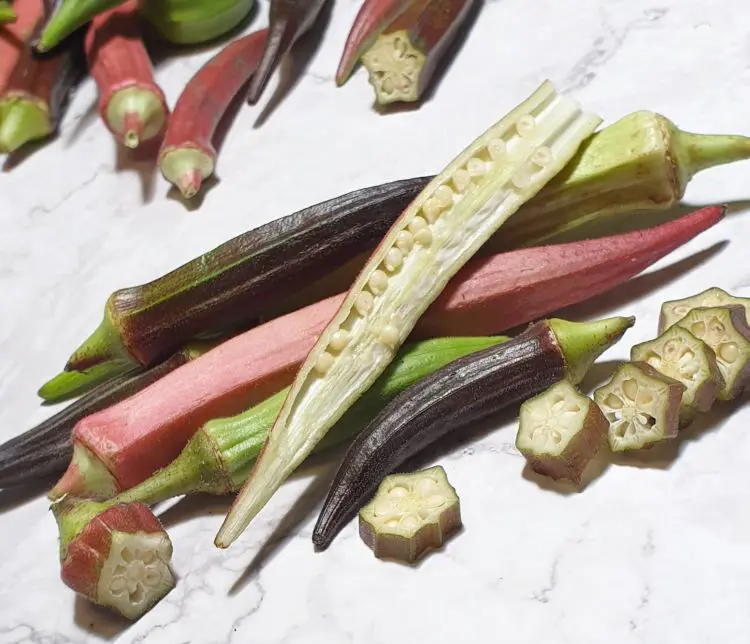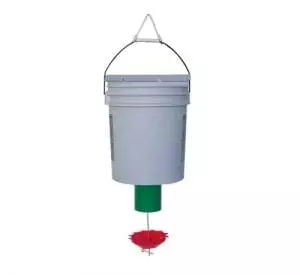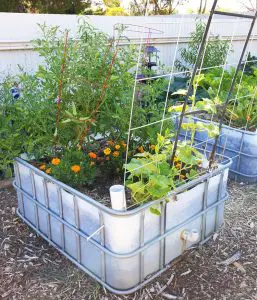
What is Okra?
Technically, okra (Abelmoschus esculentus) is a fruit, but is perceived and eaten as a vegetable. The colour changes with the variety, and ranges from pale green to pink to dark maroon. A heat-loving, low-care crop that thrives in strong sun and humidity, okra does best in subtropical and tropical gardens (if you’re in the USA, that’s zones 9-12).

The long pods are the edible part, and are best picked when they’re young and tender and under 4″ (10cm) long. Okra grows fast and is very productive; once your plants are producing, you’ll need to harvest daily or they’ll get away from you. High in fibre, magnesium, folate plus a variety of vitamins and minerals, okra is definitely worth adding to your list of kitchen staples.
How to Eat Okra
Okra has a pleasant, mild taste which is good on it own but also blends well with other flavours. It is crunchy when cooked quickly, yet is tender when slow-cooked. It contains a high amount of mucilage, which is a thick, gluey substance thought to do all sorts of good things for the body, including healing mucous membranes and increasing good bacteria in the gut. This mucilage acts a natural thickening agent in cooking, so okra lends itself particularly well to soups and stews.


There are a variety of ways you can cook and eat okra, including frying, roasting, grilling, pickling, and crumbing (breading)- here are 3 of our favourite okra recipes. I like to slice up a pod or two and add them into a stew or stir-fry. It’s good eating when raw too- choose soft young pods, slice them thinly dip in lemon juice and serve with a dip of your choice.
If you grow too much at once, never fear- you can freeze it for later use. All you need to do is wash the pods them cut the ends off, blanch them in boiling water for a few minutes, dunk them in an ice water bath, chop, and flash freeze before packing in freezer bags for long-term storage.

How to Start Okra
Okra is very easy to grow from seed. Once your overnight temperature doesn’t dip below 15C (60F), you can sow okra outdoors. Okra will grow just as well whether its sown direct or sown into punnets for later transplanting. The seeds are large and easy to handle but reasonably slow to germinate, taking around 12-14 days. Keep the soil moist (but not soggy) while waiting for your seedlings to emerge. Once the first set of true leaves have appeared, young okra plants can be planted out to their final position. This is a large and tall plant which will benefit from being spaced at 60cm (24″) apart.

Growing Conditions
Okra is a fantastic and reliable summer food crop for the subtropics & tropics, as it really loves the heat. Once the daytime temperature rises above 32C (90F), it will start to thrive. Planting your okra in a full sun position will result in strong plants with good pod production. Sow or transplant into rich, well-drained soil with a neutral pH. If the soil is prepared well in advance of planting (i.e. by the addition of compost/manure/fertiliser/blood & bone), you shouldn’t need to amend the soil during the growing season.
Okra needs about an inch of water every week to maximise its pod production. It is amongst the most drought-tolerant of vegetables, and will forgive you if you miss a couple of days’ watering. The best pod production will come from deep watering every second day, rather than daily shallow watering.
Okra is a frost-tender perennial which is usually grown as an annual. I find that in the subtropics that it’ll fruit well through the first summer, go dormant in winter, then fruit a reduced crop in the following summer. Cool climate growers can expect okra to behave strictly as an annual.

Ongoing Care
Once established, okra is relatively tough and low-care. Try not to splash the leaves when watering, or it may develop some fungal issues. As shown above, the grasshoppers of seQLD love the leaves (in my garden, at least!), but this shouldn’t impede pod production unless the plants become decimated.
A variety of other pests such as aphids, spider mites, bacterial leaf spot, and powdery mildew can also occur on okra, but as with everything in a home vegetable garden, the key is observation. If you examine your plants daily as you potter about watering, you’ll be able to minimise pest issues by treating them early. Our organic remedies can help, too- click here to see how you can make them at home for free.












